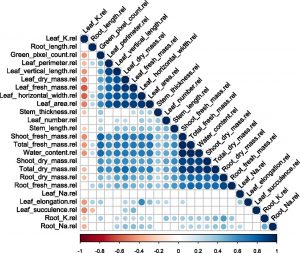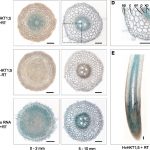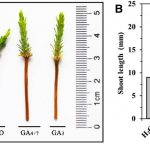Salinity Responses of Galapagos Tomatoes
High soil salinity affects the growth and development of plants, thus reducing crop yields. The wild relatives of modern crops often have adaptations to environmental stressors, and the alleles underlying these adaptations represent a rich source of genetic material that can be explored to improve environmental tolerance. The Galapagos Islands, an isolated archipelago close to the center of origin of the current domesticated tomato (Solanum lycopericum), hold a rich genetic diversity of tomato wild relatives. Since these wild tomatoes grow well despite being constantly splashed with seawater, they represent a valuable genetic resource for improving salinity tolerance in commercial tomatoes. To explore their potential further, Pailles et al. (10.1104/pp.19.00700) recorded over 20 traits reflecting plant growth, physiology, and ion content in 67 accessions and two commercial tomato lines of Solanum lycopersicum. Salt treatments were applied for 10 d using hydroponics. The Galapagos tomatoes displayed greater tolerance to salt stress than the commercial lines. Three accessions showed particularly high salinity tolerance. Wide variations in growth, physiology, and ion content were observed across the accessions, demonstrating great natural diversity underlying the mechanisms of salinity tolerance within the Galapagos tomatoes. No one trait was found to confer salinity tolerance, but different traits contributed to salinity tolerance in different lines. Galapagos tomatoes should be further explored to identify the genes underlying their high tolerance and be used as a resource for increasing the salinity tolerance of commercial tomatoes.
to environmental stressors, and the alleles underlying these adaptations represent a rich source of genetic material that can be explored to improve environmental tolerance. The Galapagos Islands, an isolated archipelago close to the center of origin of the current domesticated tomato (Solanum lycopericum), hold a rich genetic diversity of tomato wild relatives. Since these wild tomatoes grow well despite being constantly splashed with seawater, they represent a valuable genetic resource for improving salinity tolerance in commercial tomatoes. To explore their potential further, Pailles et al. (10.1104/pp.19.00700) recorded over 20 traits reflecting plant growth, physiology, and ion content in 67 accessions and two commercial tomato lines of Solanum lycopersicum. Salt treatments were applied for 10 d using hydroponics. The Galapagos tomatoes displayed greater tolerance to salt stress than the commercial lines. Three accessions showed particularly high salinity tolerance. Wide variations in growth, physiology, and ion content were observed across the accessions, demonstrating great natural diversity underlying the mechanisms of salinity tolerance within the Galapagos tomatoes. No one trait was found to confer salinity tolerance, but different traits contributed to salinity tolerance in different lines. Galapagos tomatoes should be further explored to identify the genes underlying their high tolerance and be used as a resource for increasing the salinity tolerance of commercial tomatoes.



